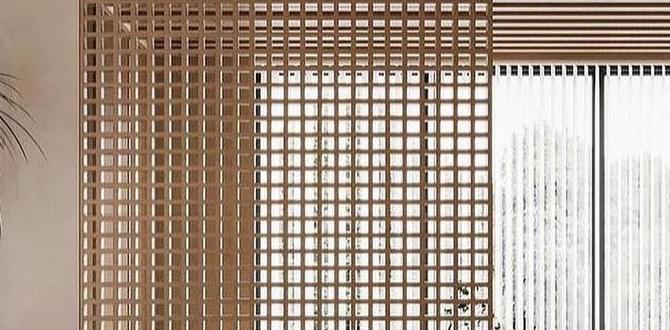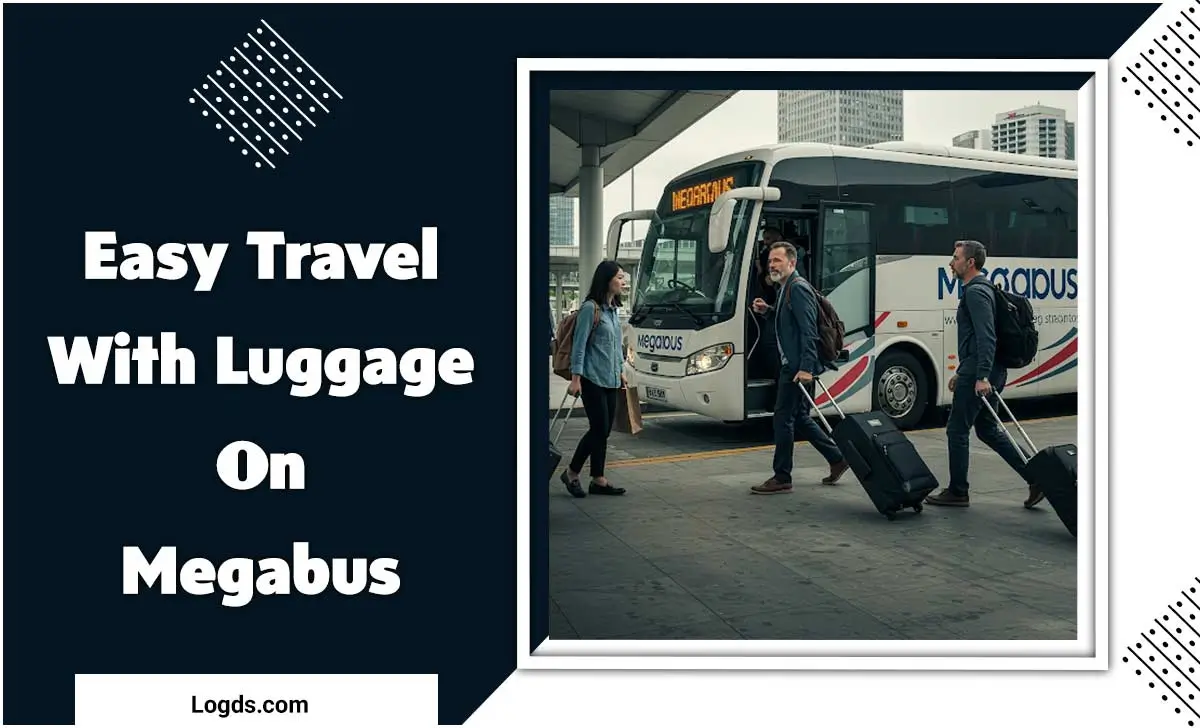Make your trip to Adelaide a breeze! This guide shares essential tips for accessible travel, covering everything from planning and transit to attractions and accommodation, ensuring a comfortable and enjoyable experience for everyone.
Adelaide, with its charming streets and vibrant culture, offers a wonderful travel experience for all. However, navigating a new city can sometimes feel a little daunting, especially when accessibility is a key concern. You might worry about getting around, finding suitable places to stay, or even accessing the amazing attractions Adelaide has to offer. It’s completely understandable!
But don’t let those worries dim your excitement. This guide is designed to make planning your accessible Adelaide adventure simple and stress-free. We’ll walk you through everything you need to know, step by step, so you can focus on enjoying the beauty and fun of South Australia. Get ready to explore Adelaide with confidence!
Planning Your Accessible Adelaide Adventure
Getting ready for any trip involves a bit of planning, and when you’re thinking about accessible travel, those early steps are even more important. A little bit of preparation now can save you a lot of hassle later, ensuring your Adelaide journey is smooth from start to finish. Let’s break down what you need to consider.
Researching Accessible Accommodation
Finding a place to stay that meets your needs is crucial. Many hotels and other accommodations in Adelaide are becoming more accessible, but it’s always best to check the specifics.
What to Look For:
Step-free access: Ensure there are no steps to enter the main building or your room, or that a ramp is available.
Accessible bathrooms: This typically means grab bars in the shower and toilet area, a roll-in shower or a bathtub with a seat, and sufficient turning space.
Room layout: Look for wider doorways and enough space to maneuver a wheelchair or mobility aid.
Amenities: Consider if there are accessible elevators, restaurant access, and parking.
How to Research:
Hotel Websites: Many hotels have dedicated accessibility pages. Look for symbols or detailed descriptions.
Contact the Hotel Directly: This is often the best approach. Call or email the hotel and ask specific questions about their accessible rooms and facilities. Don’t be afraid to ask for details!
Accessibility Booking Platforms: Some travel websites specialize in accessible bookings, or have filters you can use. A great resource is Accessible Living, which offers helpful guides and information for planning.
Review Sites: Search reviews for mentions of accessibility. Other travelers often share their experiences, which can be invaluable.
Booking Accessible Transportation
Getting to Adelaide and moving around once you’re there are key parts of your trip. Planning your transport in advance will make your journey much more comfortable.
Getting to Adelaide:
Adelaide Airport (ADL): The airport is generally well-equipped for accessibility. They offer assistance services for passengers with disabilities. It’s recommended to inform your airline and the airport directly about your needs at least 48 hours before your flight. This includes requests for wheelchair assistance, specific seating, or any other support you might require. You can find more details on their accessibility page on the Adelaide Airport website.
Travel by Train or Bus: If you’re arriving from other parts of Australia, train and bus services often have accessible options. Check with the specific transport provider (e.g., Journey Beyond for The Ghan, or regional bus lines) about their accessibility features when booking.
Getting Around Adelaide:
Public Transport: Adelaide Metro provides accessible public transport services, including buses, trams, and trains.
Buses: Most Adelaide Metro buses are low-floor and equipped with ramps and designated wheelchair spaces. You can plan your journey using the Adelaide Metro Journey Planner.
Trams: The Glenelg tram line is accessible, with level boarding at most stops. The trams themselves have designated spaces for wheelchairs and mobility aids.
Trains: Many of Adelaide’s train stations and trains offer accessible features. Check the Adelaide Metro Accessibility page for station-specific information and journey planner tools.
Taxis and Rideshares: Many taxi companies in Adelaide have wheelchair-accessible vehicles (WAVs) available. It’s best to book these in advance. Rideshare services like Uber also often have an “Access” option for WAVs in major Australian cities. Always check the availability in Adelaide when you book.
Car Hire: If you have a driving license and prefer to drive yourself, inquire about accessible vehicle hire options. Companies may offer modified vehicles, but these are usually in high demand, so book early.
Essential Packing for Comfort and Convenience
Packing smart can make a huge difference in your travel experience. For Adelaide, consider the climate and your personal needs to ensure comfort.
Clothing: Adelaide has a Mediterranean climate, meaning warm, dry summers and mild, wet winters. Pack layers so you can adapt to changing temperatures. Comfortable walking shoes are a must.
Mobility Aids: Ensure your wheelchair, walker, or other mobility devices are in good working order before you leave. If you use a powered device, pack the necessary chargers and adapters.
Personal Care Items: Discreet and reliable personal care items can greatly enhance your comfort and confidence. For longer trips, flights, or days out exploring, having products like adult diapers or pull-up underwear designed for discreet wear can provide peace of mind, preventing unexpected discomfort or situations. Many absorbent products are now very thin, breathable, and designed to feel like regular underwear, offering excellent protection without being noticeable. Companies often provide specific guidance on choosing the right absorbency for your needs.
Medications: Pack any necessary medications in their original containers, along with a copy of your prescription. Carry these in your hand luggage.
Comfort Items: Anything that makes you feel more at ease, such as a travel pillow, a comfortable blanket, or your favorite snacks.
Electronics: Don’t forget chargers, power banks, and any necessary adapters for your devices.
Exploring Adelaide: Accessible Attractions and Activities
South Australia’s capital is brimming with sights and experiences that are accessible for everyone. From cultural institutions to beautiful outdoor spaces, Adelaide has it all. Let’s look at some fantastic options.
Museums and Galleries
Adelaide boasts world-class cultural institutions that are committed to accessibility.
South Australian Museum: Located on North Terrace, the museum offers step-free access to all main galleries. They have lifts and accessible restrooms. You can often borrow wheelchairs for use within the museum. It’s a fantastic place to explore natural history and Aboriginal cultures.
Art Gallery of South Australia: Also on North Terrace, the Art Gallery is largely accessible with ramps and lifts. Most exhibition spaces are easy to navigate. They provide wheelchairs and offer accessible toilets. It’s a great place to immerse yourself in art from around the world.
Migration Museum: Situated in the heart of the city, this museum tells the stories of people who have migrated to South Australia. It is designed to be accessible, with level access throughout its spaces and accessible facilities.
Parks and Gardens
Adelaide is known as the “20-minute city” and offers beautiful green spaces easily accessible for all.
Adelaide Botanic Garden: These stunning gardens offer wide, paved paths throughout most of the grounds, making them ideal for wheelchairs and strollers. Key features like the Bicentennial Conservatory and the Palm House are also accessible. It’s a serene place to enjoy nature.
Elder Park: Located along the River Torrens, Elder Park is easily accessible and offers lovely views of the city skyline and the River Torrens. You can enjoy a leisurely stroll or relax on a bench and take in the atmosphere.
City Centre and Shopping
Adelaide’s city center is designed with pedestrians in mind, and many areas are quite accessible.
Rundle Mall: This pedestrian shopping mall is mostly flat and easy to navigate. The pavements are wide, and most shops have accessible entrances, though it’s always worth checking individual store access if you have specific requirements.
Adelaide Central Market: A vibrant hub of food and culture, the Central Market is largely accessible with flat floors and wide aisles. It’s a fantastic place to explore, sample local produce, and experience the city’s culinary delights.
Accessible Tours and Experiences
To truly get the most out of your visit, consider guided tours designed with accessibility in mind.
Accessible City Tours: Several tour operators offer bespoke or scheduled accessible tours of Adelaide. These might include van tours with lifts, or walking tours tailored to accessible routes. Searching online for “Adelaide accessible tours” will help you find current providers.
River Cruises: The River Torrens offers a relaxing way to see the city from a different perspective, often with accessible tour boats available. Check with operators like
Adelaide River Torrens Cruises for their accessibility features.
Navigating Adelaide: Local Insights and Practical Tips
Beyond the major attractions, day-to-day navigation in Adelaide can be made easier with a few local tips.
Using Public Transport Effectively
Adelaide Metro is your friend when it comes to getting around the city and its suburbs.
Planning your Route: Use the Adelaide Metro website or their app to plan your journey. You can filter for accessible routes and check real-time departures.
On-Board Assistance: Public transport staff are available to assist passengers if needed. Don’t hesitate to ask for help when boarding or alighting.
Travel Concessions: If you have a disability, you may be eligible for concession fares. Check the Adelaide Metro website for details on how to apply.
Accessible Parking
If you’re driving, knowing where to park is essential.
City Parking: Adelaide has many parking stations around the CBD, and some offer disability parking bays. It’s recommended to check the Adelaide City Council website or the individual parking operator’s website for locations and accessibility information before you arrive.
Street Parking: There are also designated disability parking bays on many city streets. These have specific time limits and require a valid disability parking permit.
Emergency Preparedness
It’s always wise to have a plan for unexpected situations.
Emergency Services: In case of an emergency, dial 000. This is the universal emergency number in Australia for Police, Fire, and Ambulance services.
Local Support: Keep a note of your accommodation’s contact details and any local disability support services you might need.
Accommodation Spotlight: Examples of Adelaide’s Accessible Stays
Adelaide offers a range of accommodation options, from hotels to serviced apartments, with increasing numbers focusing on accessibility. While specific room availability can vary, here are types of places to consider and what makes them a good choice.
Accessible Hotel Rooms
Many major hotel chains in Adelaide provide rooms designed for guests with disabilities. These rooms typically feature:
Wider doorways: Allowing for easier entry with wheelchairs or mobility aids.
Accessible bathrooms: Equipped with grab bars, roll-in showers or accessible tubs, and adjustable shower heads.
Lever-style door handles and light switches: Easier to operate for individuals with limited hand strength.
Lowered countertops and shelving: In some cases, for easier access.
When booking, always call the hotel directly to confirm the specific features of their accessible rooms and book in advance, as these rooms are often in high demand. Brands like Novotel, Crowne Plaza, and smaller boutique hotels often have accessible options.
Serviced Apartments
For those who prefer more space or the option to self-cater, accessible serviced apartments can be an excellent choice.
Spacious Layouts: Apartments often provide more living space, which can be beneficial for maneuvering mobility devices.
Full Kitchen Facilities: Allows for preparing your own meals, which can be convenient if you have specific dietary needs or prefer not to dine out for every meal.
Wider Bathrooms: Many newer apartment complexes are built with modern accessibility standards in mind.
Look for apartments that explicitly state they have accessible units. Websites like TripAdvisor or booking.com allow you to filter searches by accessibility features, but again, direct contact is recommended for confirmation.
Specialized Accessible Accommodation
In some cases, you might find dedicated accessible holiday homes or facilities. These are often designed from the ground up with features like:
Zero-step entries: Smooth, level access throughout.
Fully accessible bathrooms: Including walk-in showers with seats, ample grab bars, and increased turning space.
Adjustable beds or specialized bedroom configurations.
* Accessible kitchens: With lower benches and accessible appliances.
Searching for “accessible accommodation Adelaide” or “disability friendly rentals Adelaide” can help uncover these specialized options. Resources like South Australia Tourism may also have listings or direct you to relevant bodies.
Here’s a quick comparison table for different accommodation types:
| Accommodation Type | Pros for Accessible Travel | Cons for Accessible Travel | Best For |
|---|---|---|---|
| Accessible Hotel Rooms | Convenient locations, daily housekeeping, on-site amenities (restaurants, gyms), dedicated accessibility features. | Can be smaller, less privacy than apartments, limited self-catering options. | Short stays, business travelers, those who value hotel services. |
| Serviced Apartments | More space, privacy, self-catering options, often modern facilities. | May require more travel to city centers, variable accessibility standards, fewer on-site services. | Families, longer stays, those who want to prepare some meals. |
| Specialized Accessible Stays | Highest level of accessibility, bespoke features, tailored for specific needs. | Can be harder to find, may be located away from city centers, limited availability. | Travelers with high or very specific accessibility needs. |
Conclusion
Adelaide is a city that warmly welcomes all visitors, and with a little thoughtful planning, your accessible travel here can be truly memorable. From ensuring you have comfortable accommodation and reliable transport to discovering the city’s vibrant culture and stunning natural beauty, every step can be made smoother.
Remember, the key to a successful accessible trip is preparation. Researching your options, communicating your needs, and utilizing the resources available will empower you to explore Adelaide with confidence and freedom. Whether you’re wandering through the peaceful Botanic Gardens, immersing yourself in art at the gallery, or simply enjoying a coffee in a city cafe, Adelaide offers experiences for everyone. And by packing smart and staying prepared with essentials, you can ensure your journey is as comfortable and stress-free as possible.
So, go ahead and plan that trip. Adelaide is ready to be explored, and this guide is your starting point for an unforgettable, accessible adventure. Enjoy the journey!
Frequently Asked Questions
Q1: How can I easily get around Adelaide if I use a wheelchair?
A: Adelaide Metro offers accessible buses and trams with ramps and designated spaces. Taxis and specialized car services with wheelchair-accessible vehicles (WAVs) are also available, but booking these in advance is recommended. Many city attractions and parks have flat, paved paths.
Q2: Are there accessible toilets in Adelaide’s main tourist areas?
A: Yes, most major attractions, shopping centers, and public parks in Adelaide have accessible toilet facilities. Public toilets are managed by the Adelaide City Council and other local councils, with many facilities updated to meet current accessibility standards.
Q3: What kind of personal care items are recommended for stress-free travel?
A: For comfort and peace of mind on longer journeys or days out, discreet adult diapers or pull-up underwear designed for moderate to heavy absorbency are recommended. Look for breathable, thin products that feel like regular underwear to minimize bulk and maximize comfort.
Q4: How can I find accessible accommodation in Adelaide?
A: Start by checking hotel websites for accessibility information, or call the hotel directly to discuss your needs. You can also use booking platforms with accessibility filters or consult specialized travel sites like Accessible Living for guidance. Booking directly is often the most reliable way to confirm suitability.
Q5: Is Adelaide Airport accessible for travelers with disabilities?
A: Yes, Adelaide Airport (ADL) is generally well-equipped. They offer assistance services for passengers with disabilities. It’s important to inform your airline and the airport at least 48 hours in advance about any specific requirements you may have, such as wheelchair assistance.
Q6: Can I bring my service animal to attractions in Adelaide?
A: Yes, accredited service animals are generally welcome in most public places, including attractions, restaurants, and public transport in South Australia, in accordance with the law. It’s always a good idea to confirm with specific venues if you have concerns.
Q7: What are some good outdoor accessible activities in Adelaide?
A: The Adelaide Botanic Garden offers beautiful, accessible paths. Elder Park along the River Torrens is also easy to navigate and offers lovely views. Many coastal areas and walking trails around Adelaide are also being made more accessible.






